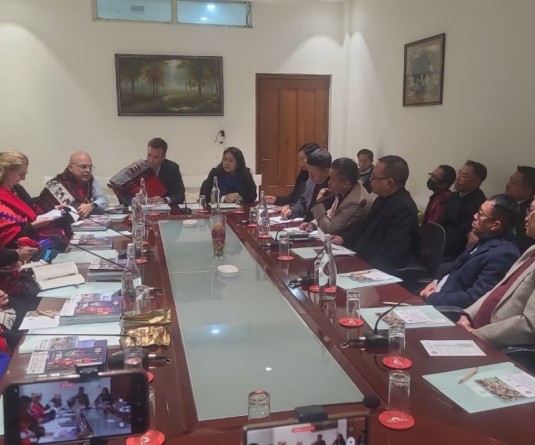
Bonnie Konyak
Dimapur | April 4
An investigation of the ginger market trends in the National and International level revealed startling information on the unfair prices received by local farmers from the Agricultural Produce and Marketing Committee (APMC). In the words of Principal Secretary Alemtemshi Jamir, the government had come up with the ginger project with the APMC last year, merely to facilitate a system for the interest of the farmers when the rates of the spice had dropped to as low as Rs 2-3. “The minimum rate of Rs. 7 had been fixed so that the farmer’s confidence is not lost” said the Principal Secretary adding that the government did not forecast the rate to remain constant. However the APMC seems to have taken it as a fixed rate even as today’s wholesale rate for the spice in Delhi market is Rs. 25 per kg and last week the price had been Rs. 35 per kg.
It was revealed by sources in Delhi that the prices even go up as high as Rs. 70 per kg while the farmers in Nagaland are earning a meager sum of Rs. 7.50 per kg of ginger. With the expense of transporting of ginger from Nagaland to Delhi confirmed to be Rs. 3 per kg, APMC is expected to earn a huge profit of Rs. 34.50 per kg.
According to the Spice Board of India, the updated domestic price of Cochin ginger (best) for this week is Rs. 45 and Cochin (medium) is found to be Rs. 40 per kg. Cochin ginger is the popular name for the Indian variety and according to Dr. Loli Deiho, SASRD, the Cochin variety is more or less the same to the Nadia variety except that the Nadia ginger is bigger in size due to the climatic difference in the North East. Another expert said that the difference is that of market preference since the Cochin ginger is preferred in the international market and the Nadia preferred in the national market.
The APMC officials however maintained that the present price of ginger in Delhi, which was offering the highest price in the country, had plunged down to a mere Rs. 7. This would mean that the APMC is incurring heavy losses by buying the spice from the farmers at Rs. 7.50 with the transportation charges added to it and selling it in Delhi at a loss of Rs. 3.50 per kg. The APMC officials, at the same time, have admitted that some Marwari businessmen have offered the local farmers as much as Rs. 10 per kg of ginger but failed to give a satisfactory explanation to the inconsistencies revealed by the investigation but set it aside as the monopolizing of the markets by the veteran businessmen.
Meanwhile, on being queried if the farmers were receiving a fair deal, Principal Secretary, Alemtemshi retorted, “I don’t think so, if the market price is high, the farmers must also receive better returns” and continued that some unscrupulous traders had entered the system and were trying to take advantage of the poor farmers. The government, he said, had tried to intervene in the interest of the farmers when they were having a trying time but the market had changed since then. Alemtemshi also revealed that the government’s extension of help through the present marketing system in the APMC had also resulted in confusion of the farmers, who now seemed to be under the wrong notion that APMC was the only authorized dealer of ginger in Nagaland which, in fact, is not so. He stressed if a better price was being offered to them, the local farmers were free to sell their ginger to anyone other than the APMC. While expressing happiness at the fact that the Nagaland was entering the national market for the first time on a commercial scale, the Principal Secretary said that the State would need to do “intensive review” after this first attempt of ginger marketing.
Morung Express News






